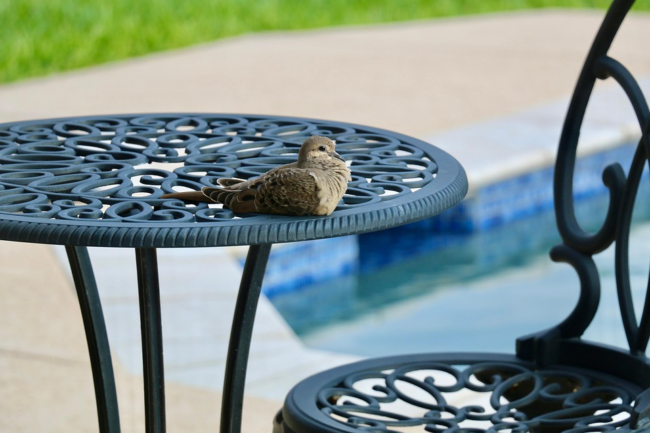
Custom metal furniture and table bases go beyond functionality —they showcase good craftsmanship and inspiring ideas. From the first sketch to fabrication, turning simple materials into exceptional, lasting items shows the craft in each piece.
This blog digs into the detailed making of custom metal furniture. And shows how unique designs outshine factory-made options. See how skilled makers blend new ideas, precision, and talent to make pieces that transforms any room.
What Makes Custom Metal Furniture Unique?
It’s personalized for you and fits your wants and needs. Each piece is thoughtfully crafted, so it complements your space.
Going for a modern or rustic look? Doesn’t matter. With custom metal, you’ve got endless style choices… all to make your dream real.
Key Features of Custom Metal Furniture:
- Unique Pieces: Every item is custom-made, so it will fit your space’s aesthetic,
- Lasts Long: Strong metals—like steel and aluminum—help your furniture last for ages,
- Fits Everywhere: Works with many looks… modern, old-school, sleek, or simple,
- Eco-friendly: Metals can be recycled. This makes them a green pick for those who care about our planet.
By choosing custom designs, you’re not just investing in furniture; you’re adding a personal statement piece that elevates your living or working environment.
The Process For Crafting Custom Metal Furniture and Table Bases
Creating custom metal furniture and table bases requires one to blend artistry, technical skills, as well as state-of-the-art tools.
1. Initial Concept and Inspiration
Every masterpiece starts with an idea. When planning custom metal furniture, clients work closely with designers or artisans to share their vision, and the functionality of the piece that is intended. It doesn’t matter whether it’s inspiration drawn from Pinterest, a sketch on a napkin, or interior design trends, this is where the creative process begins to take shape.
Key considerations for this stage:
- What is the actual function of the furniture (e.g., dining table, coffee table, or industrial workstation)?
- Design preferences like modern, vintage, or abstract styling,
- Measurements and spatial constraints to ensure the perfect fit,
- Budget, materials, and finishing options.
2. Selection of Perfect Materials
Metal’s a tough material and can bent, so it’s great for making furniture. Depending on what you want, folks might suggest stuff like:
- Aluminum is not heavy at all and doesn’t rust. Also, it is perfect for outdoor chairs and tables,
- Steel works perfectly for sturdy table legs you see in dining or office settings,
- Wrought Iron has a sleek, vintage industrial feel, ideal for elegant, pieces,
- Brass or Copper add a refined, inviting touch, with a sophisticated design.
The choice of material affects too much the final look and functionality of the piece. Hence, the experts provide recommendations tailored to each client’s unique requirements.
3. Prototyping
Once the concept and materials are agreed upon, the designer turns them into clear drawings. They use computer programs or draw by hand to get all the right sizes down, including the finer details.
Some skilled craftsmen might build a model or make a visual representation to show the clients. This allows them to approve the design before moving on.
4. Craftsmanship and Fabrication
Fabrication is where the design comes to life. Using cutting-edge tools and time-tested techniques, metals are cut, bent, welded, and polished into the desired shapes. This phase involves a fine balance of skill and technology:
- Laser Cutting and Plasma Cutting ensure precision and smooth edges,
- Welding and Joining help assemble different components seamlessly,
- Finishing Touches like sanding, grinding, or bead blasting give each piece a smooth, polished look.
For example, companies like Creative Metal Design furniture specialize in incorporating intricate details, from abstract sculptures to custom inscriptions, making each piece a true work of art.
5. Surface Finishing
After fabrication, surface finishing enhances the visual appeal and protects the piece from wear and tear. Popular finishing options include:
- Brushed finishes are for a sleek and modern appearance,
- Patinas to create an aged or textured effect,
- Polishing for metallic shine or matte elegance.
Finishing touches elevate the furniture and ensure it can withstand daily use while remaining beautiful.
6. Final Assembly and Delivery
Once the finishing is complete, the furniture or table base goes through a final quality check, ensuring every detail aligns with the approved design. It is then carefully packaged and delivered or installed. Seeing the finished product in the space it was designed for is often the most rewarding moment for both the client and the artisan.
Why Opt for Custom Metal Table Bases?
Table bases often serve as the structural foundation of furniture while adding a touch of aesthetic flair. For those looking to add a functional yet visually striking element to their interiors, custom metal table bases offer several advantages:
- Styles go from simple to elegant, not just serving a functional purpose, not just holding things up, but looking good too,
- Tailored sizes ensure the table base fits perfectly, in a cozy dining nook or an expansive workspace,
- Tough materials, for instance, stainless steel ensure that it lasts for years to come,
- Your own design lets you show off who you are and makes a bold statement in your room.
You ensure that your table base turns heads for all the right reasons by choosing a one-of-a-kind design from Creative Metal Design or similar specialists,
Metal Furniture as a Statement of Sustainability and Modern Living
Today, more folks want green, durable, and unique furniture. Metals are returning to style for their sustainability and adaptability.
Every piece of custom furniture tells a unique story. By investing in custom designs, you’re supporting timeless craftsmanship that transforms raw materials into bespoke works of art.
